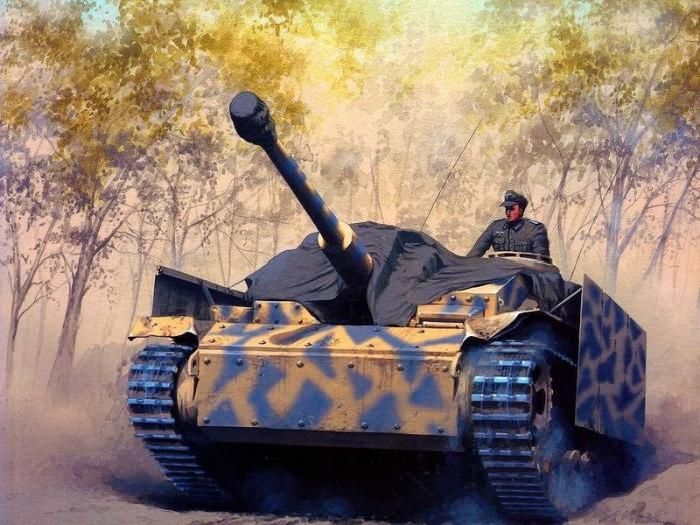|
|
Tank Drawing
|
In accordance with blitzkrieg methods, German tanks bypassed enemy strongpoints and could radio for close air support to destroy them, or leave them to the infantry. A related development, motorized infantry, allowed some of the troops to keep up with the tanks and create highly mobile combined arms forces. The defeat of a major military power within weeks shocked the rest of the world, resulting in an increased focus on tank and anti-tank weapon development.
The North African Campaign also provided an important battleground for tanks, as the flat, desolate terrain with relatively few obstacles or urban environments was ideal for conducting mobile armoured warfare. However, this battlefield also showed the importance of logistics, especially in an armoured force, as the principal warring armies, the German Afrika Korps and the British Eighth Army, often outpaced their supply trains in repeated attacks and counter-attacks on each other, resulting in complete stalemate. This situation would not be resolved until 1942, when during the Second Battle of El Alamein, the Afrika Korps, crippled by disruptions in their supply lines, was forced to retreat by a massively reinforced Eighth Army, the first in a series of defeats that would eventually lead to the surrender of the remaining Axis forces in Tunisia.
The German invasion of the Soviet Union, Operation Barbarossa, started with the Soviets having a superior tank design, the T-34. A lack of preparations for the Axis surprise attack, mechanical problems, poor training of the crews and incompetent leadership caused the Soviet machines to be surrounded and destroyed in large numbers. However, interference from Adolf Hitler, the geographic scale of the conflict, the dogged resistance of the Soviet combat troops, and Soviet manpower and production capability prevented a repeat of the Blitzkrieg of 1940. Despite early successes against the Soviets, the Germans were forced to up-gun their Panzer IVs, and to design and build larger and more expensive Panther and Tiger tanks. In doing so, the Wehrmacht denied the infantry and other support arms the production priorities that they needed to remain equal partners with the increasingly sophisticated tanks, in turn violating the principle of combined arms they had pioneered. Soviet developments following the invasion included upgunning the T-34, development of self-propelled anti-tank guns such as the SU-152, and deployment of the IS-2 in the closing stages of the war.
When entering World War II, America's mass production capacity enabled her to rapidly construct thousands of relatively cheap M4 Sherman medium tanks. A compromise all round, the Sherman was reliable and formed a large part of the Anglo-American ground forces, but in a tank-versus-tank battle was no match for the Panther or Tiger. Numerical and logistical superiority and the successful use of combined arms allowed the Allies to overrun the German forces during the Battle of Normandy. Upgunned versions with the 76 mm gun M1 and the 17 pounder were introduced to improve the M4's firepower, but concerns about protection remained.
|
|









